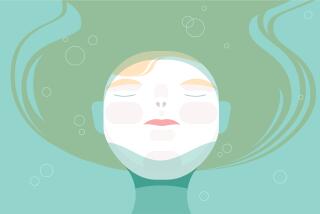Some Japanese Put Faith in Radon
- Share via
OFUNA, Japan — It has been singled out as the second-leading cause of lung cancer in the United States, right behind smoking. But to Shiro Umeda, sprightly at 74, radon is the best thing since aspirin.
Every month for the last 10 years, he has come to a radon bath here to soak it up and breathe it in. He’s convinced that it has helped ease his back pain and improve his overall health.
Undaunted by warnings from the scientific community that the highly radioactive gas is a carcinogen, tens of thousands of health-seekers like Umeda are drawn each year to hot springs in Japan that claim radon can cure an array of ills.
“Not a doubt in my mind,” Umeda said after a recent session. “It makes me feel better.”
The popularity of radon is nothing new.
At the turn of the century, its curative powers were believed to be so strong that products containing radon or radium, its parent element, ranged from toothpaste and beauty creams to chocolate bars.
Research has since led most health experts to make an about-face.
Most, but not all.
While acknowledging that high doses are undoubtedly dangerous, Yutaka Okumura, a professor of radiology at Nagasaki University, a leading center of radiation research, said the issue may be less simple than some of the more dire cautions suggest.
Okumura cited a study he participated in that found cancer fatalities between 1976 and 1993 among more than 4,300 people living near one of Japan’s most famous radon springs, Misasa, were significantly lower than rates elsewhere. Radon levels in the test area were roughly 70 becquerels per cubic meter, or about three times higher than those in the control areas.
“I believe people who frequent radon hot springs may be less likely to die of cancer,” he said.
However, Nagasaki University professor Shunichi Yamashita, a colleague of Okumura’s who specializes in the effects of radiation on atomic-bomb victims, said many radon hot springs were safe simply because, unlike Misasa, they didn’t actually have much radon.
“Japanese radon baths use so little radon, almost nonmeasurable or close to zero, that there should be no worries at all,” he said.
Other than Okumura’s cancer study, there is also little evidence linking radon to any specific health benefits. Claims like Umeda’s are often explained by researchers as the result of the placebo effect, or to the soothing heat of the bathwater itself.
That the gas can be deadly is not a question.
Radon, produced by the decay of radium, is classified as a carcinogen by the World Health Organization. The U.S. Environmental Protection Agency estimates that radon in indoor air causes about 21,000 deaths each year in the United States alone, and is the leading cause of lung cancer after smoking.
Its first known victim was Marie Curie, who won her second Nobel Prize in 1911 for discovering radium and another radioactive element. She eventually developed chronic radiation sickness from her daily contact with radon and radium, and died of leukemia.
The gas normally enters the body through inhalation. Most is exhaled right back out, but some can accumulate in the lungs, where its radioactive decay can harm the tissue around it and lead to cancer.
Such warnings are nowhere to be found at this popular indoor radon bath on Tokyo’s southern outskirts. Signs instead claim that radon can tame everything from high blood pressure to hemorrhoids.
“Alpha waves emitted by the gas are brought into the body when you breathe,” one sign says. “They go to every corner of your capillaries.... This active metabolization brought about by radon is the cause of its refreshing and rehabilitating powers.”
Pamphlets for the center add that its “health rooms” are “pumped full of radon from six large-scale radon-producing machines.”
The bath’s manager refused to comment on the specifics, but said the machines used were set to “safe levels.”
Whether that’s even possible is a matter of debate.
“There is no safe level of radon -- any exposure poses some risk of cancer,” the EPA says on its Radon Information website.
The Japanese government, meanwhile, has taken a very different stance.
“For now, we don’t see the need to regulate radon,” said Ryosuke Murayama, of the science agency’s nuclear regulation office. “Radon that exists in the air is minimal and thus poses little health danger.”






